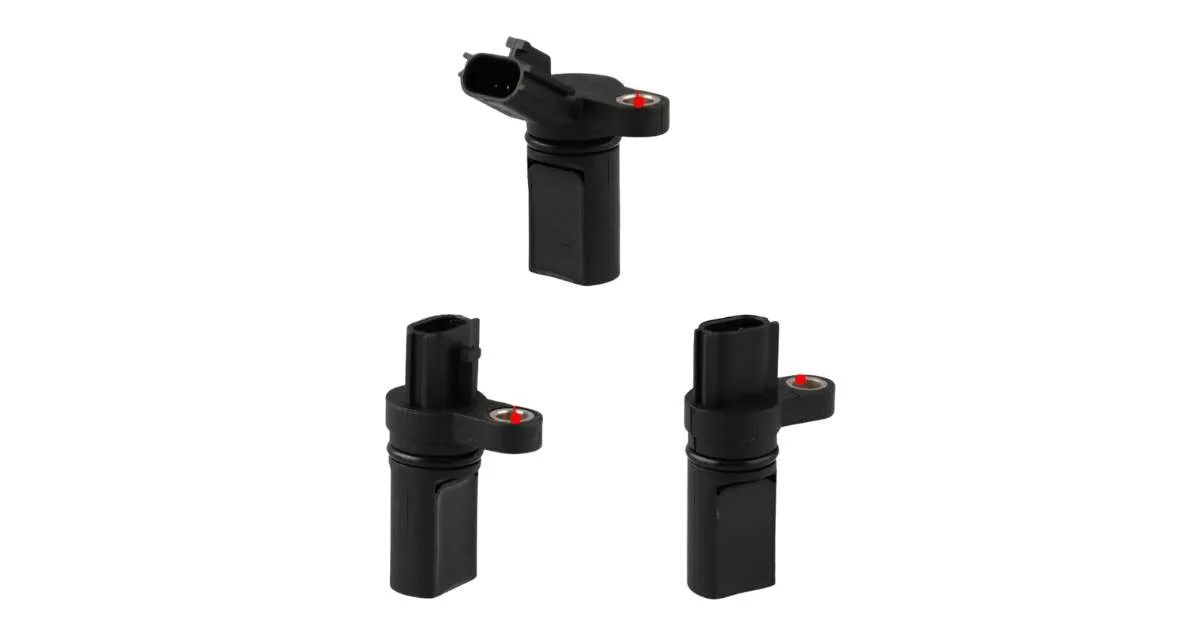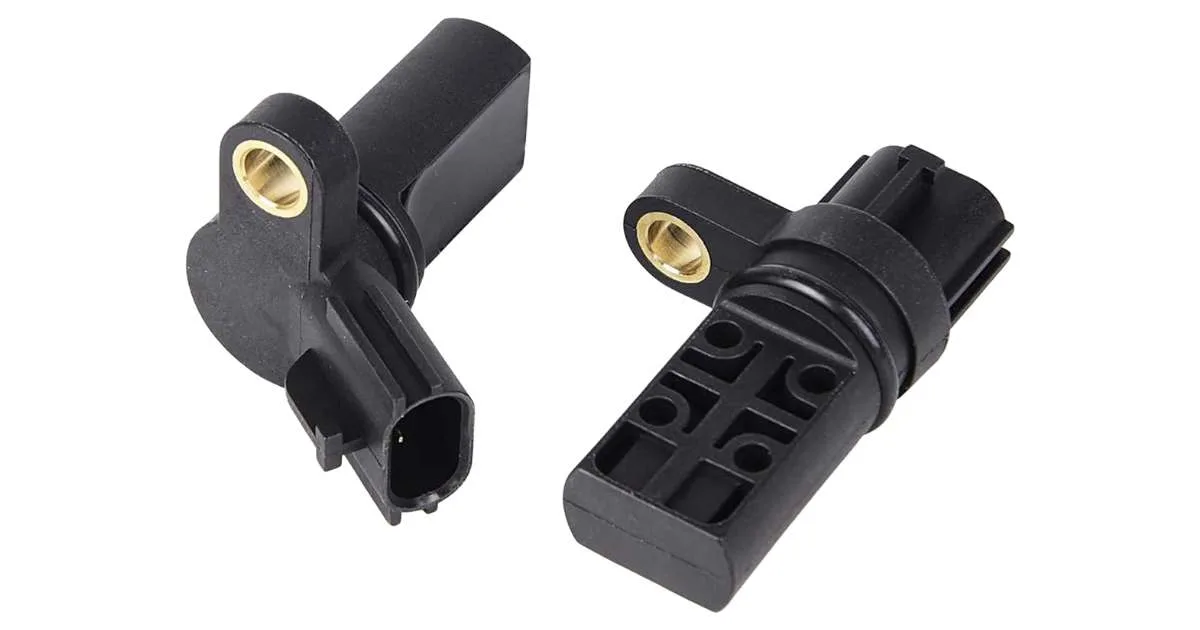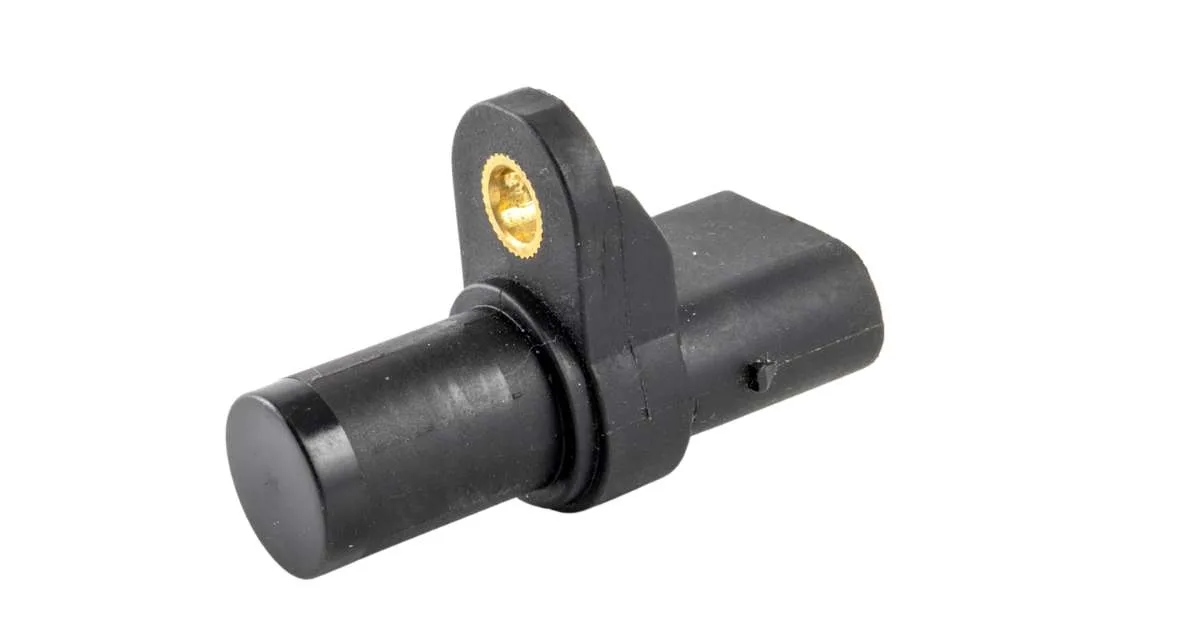
Your car's crankshaft position sensor is vital for engine performance. This small component can cause big problems when it fails.
Knowing when your crankshaft position sensor is bad is key to avoiding engine troubles and keeping your ride smooth. Your vehicle relies on this sensor to monitor the position and rotational speed of the crankshaft, which is crucial for engine timing.
A failing sensor can lead to a range of issues, from rough idling to a complete no-start condition. So, what signs should alert you to a potential problem? This post will guide you through the common symptoms of a faulty crankshaft position sensor. You'll learn about the warning signs, from engine misfires to poor acceleration, so you can address the issue before it leads to more serious damage. Keep your drive trouble-free by staying informed and proactive about your car's health.
 Engine Performance Issues
Engine Performance Issues
 Impact On Ignition And Fuel Systems
Impact On Ignition And Fuel Systems
 Replacement And Maintenance
Replacement And Maintenance
Credit: atldiesel.com
Introduction To Crankshaft Position Sensors
Crankshaft position sensors are vital for engine performance. They track the crankshaft's position and speed. This data helps manage engine timing and fuel injection. Without a functioning sensor, engines may face serious issues.Role Of The Crankshaft Position Sensor
The crankshaft sensor plays a crucial role in engine management. It ensures smooth engine operation. Below are its main functions:- Timing: Controls ignition and fuel injection timing.
- Efficiency: Helps in achieving better fuel efficiency.
- Performance: Maintains optimal engine performance.
Symptoms Vs. Diagnosis
Recognizing a faulty crankshaft position sensor is key. Look out for these symptoms:- Stalling: The engine may stall unexpectedly.
- Starting trouble: Difficulty in starting the engine.
- Check engine light: The light on the dashboard may turn on.
 Engine Performance Issues
Engine Performance Issues
Engine Performance Issues
Engine performance issues often signal a bad crankshaft position sensor. This vital part helps manage engine timing. When it fails, the engine struggles. Let's explore two common symptoms:Unexpected Stalling
Stalling happens without warning. The engine simply turns off. This is both annoying and dangerous. A failing sensor can't track the crankshaft's position. Thus, the engine loses its rhythm and stalls.- Car stops suddenly.
- It might restart, only to stall again.
- Dangerous during driving.
Difficulty Starting The Engine
Starting your car becomes a challenge. The engine cranks but won't start. This is because the sensor cannot tell the engine's control unit the position of the crankshaft. Without this information, the engine can't start properly.- Turn the key, engine cranks.
- Engine doesn't start.
- May take multiple tries.
Erratic Behavior
Understanding your car's health can be tricky. A crankshaft position sensor plays a crucial role. It tells the engine's computer how fast the crankshaft spins. This affects how the engine runs. When this sensor goes bad, your car shows erratic behavior. It's a sign that you need to check the sensor.Inconsistent Revolutions Per Minute (rpm)
Your car's RPM gauge should stay steady as you drive. A bad crankshaft sensor can't track the crankshaft's speed right. This makes the RPM readings jump around. You might see the RPM needle moving up and down. This is not normal. It's a clear sign something's wrong.Sudden Jerking Or Surging
A smooth drive turns rough with a failing sensor. Your car might jerk or surge forward. This can happen without warning. It's the engine getting wrong speed info from the sensor. These sudden moves are not just annoying. They can be unsafe. It's important to fix this issue soon. Credit: www.youtube.comIlluminated Check Engine Light
An illuminated Check Engine Light is often the first sign of trouble in your vehicle. It's a clear indicator that something's not right under the hood. When the culprit is a failing crankshaft position sensor, your car's computer will let you know with a lit-up warning on your dashboard.Diagnostic Trouble Codes (dtcs)
Your car's onboard computer generates Diagnostic Trouble Codes when it detects a problem. These codes are essential for pinpointing issues. A bad crankshaft position sensor often triggers specific codes that can be read with an OBD-II scanner. Mechanics use this tool to read the codes and identify the exact issue.Interpreting The Check Engine Light
The Check Engine Light can mean many things. To interpret this light correctly, a diagnostic scanner is crucial. It reads the DTCs and helps narrow down the possible causes. Without this tool, you're guessing, and that can lead to unnecessary repairs and costs. A professional technician can connect the scanner to your vehicle. They will provide a precise diagnosis and recommend the right fix. Remember, an illuminated Check Engine Light should never be ignored. It's your vehicle's way of asking for help. Impact On Ignition And Fuel Systems
Impact On Ignition And Fuel Systems
Impact On Ignition And Fuel Systems
The crankshaft position sensor plays a vital role in your car's performance. It directly impacts the ignition and fuel systems. A failing sensor can lead to several engine issues. Let's explore how bad crankshaft position sensors affect ignition and fuel systems.Misfires And Poor Fuel Economy
A bad sensor leads to engine misfires. Misfires happen when the engine doesn't ignite fuel correctly. This issue causes the car to jerk or stall. It also results in poor fuel economy. The car uses more gas and runs less smoothly.Timing And Combustion Problems
Timing is crucial for engine operations. A faulty sensor disrupts timing. This disruption affects how fuel burns in the engine. It leads to combustion problems. The engine might run rough or have a hard start. In some cases, it might not start at all.Testing The Crankshaft Position Sensor
Is your car acting up? A faulty crankshaft position sensor might be the culprit. This sensor plays a pivotal role in your vehicle's performance. It tells the car's computer how fast the crankshaft is spinning and its position. If this sensor fails, your car might struggle to start or run properly. It's crucial to test it before assuming it needs replacement. Let's dive into how to test the crankshaft position sensor.Visual Inspection
Start with the basics: a visual check. Look at the sensor closely. Check for any visible damage or oil contamination. Wires should be secure and intact. Any cracks or wear could mean trouble.Multimeter Testing
Next, grab a multimeter. You'll check the sensor's output. Set your multimeter to the AC voltage setting. Connect the probes to the sensor's terminals. Crank the engine. A good sensor will show a voltage that changes as the engine speed varies. No change? The sensor might be bad. Remember, always take safety precautions when working with your vehicle.The Link Between Sensors And Vehicle Electronics
The Link Between Sensors and Vehicle Electronics plays a crucial role in car performance. Cars have many sensors. These sensors talk to the car's brain, the Electronic Control Unit (ECU). A key sensor is the crankshaft position sensor. It tells the ECU how the engine is doing. When this sensor fails, the car struggles. Let's dive into common issues.Sensor Connectivity Issues
Wires connect the sensor to the car's system. Sometimes, wires break or disconnect. This stops the sensor from talking to the car. Signs include the engine light turning on and the car not starting well. Checking the wires can sometimes fix the problem.Electronic Control Unit (ecu) Complications
The ECU is the car's brain. It uses sensor data to make decisions. If the ECU has problems, the car does not run right. A bad crankshaft sensor sends wrong data to the ECU. This can cause the car to stop suddenly or not run smoothly. Replacing a faulty sensor often helps. Replacement And Maintenance
Replacement And Maintenance
Replacement And Maintenance
Maintaining your vehicle includes monitoring key components like the crankshaft position sensor. This sensor plays a crucial role in your engine's performance. Knowing when to replace it can save you from unexpected breakdowns. Let's dive into the details of sensor replacement and maintenance.When To Replace The Sensor
Several signs indicate a failing crankshaft position sensor. Your car might stall or have trouble starting. You may also notice poor fuel economy or a check engine light. These symptoms suggest it's time for a replacement. Don't wait until your car stops running. Act promptly to avoid further engine damage.Choosing The Right Replacement Part
Quality matters when selecting a new crankshaft position sensor. Always opt for a part that matches your vehicle's specifications. Check your owner's manual or consult with a professional. They can guide you to the right part. This ensures your car runs smoothly and remains reliable on the road.Preventive Measures And Best Practices
Vehicle health hinges on component integrity. The crankshaft position sensor is no exception. Timely detection of its failures ensures peak performance. Let's explore preventive measures to keep this vital part in check.Regular Vehicle Diagnostics
Running diagnostics regularly can save time and money. It spots sensor issues before they worsen. Use an OBD-II scanner for accurate results.- Check engine codes monthly
- Monitor performance metrics
- Address error codes promptly
Understanding Wear And Tear
Sensors wear down over time. Recognizing the signs of wear prevents sudden failures. Look for rough idling or poor acceleration.| Sign | Meaning |
| Erratic starts | Possible sensor degradation |
| Stalling engine | Wear may be significant |
Conclusion: Staying Ahead Of Sensor Failures
Conclusion: Staying Ahead of Sensor Failures is crucial for your vehicle's performance and safety. A failing crankshaft position sensor can lead to various problems. By understanding the signs and acting promptly, you can prevent further damage.Recognizing The Importance Of Sensor Health
The crankshaft position sensor plays a vital role in engine management. It ensures fuel efficiency and smooth operation. Spotting issues early keeps your engine in good shape.- Engine misfires signal potential sensor problems.
- Stalling engines often point to sensor failures.
- Check engine lights can indicate sensor health.
The Benefits Of Timely Intervention
Addressing sensor issues promptly avoids costly repairs. It also maintains optimal engine performance. Timely action can extend your vehicle's lifespan.- Prevents unexpected breakdowns.
- Reduces repair costs over time.
- Ensures reliable engine starts.
Frequently Asked Questions
What Are The Symptoms Of A Bad Crankshaft Sensor?
A failing crankshaft position sensor can lead to rough idling, engine misfires, or irregular acceleration. The engine might also struggle to start or, in severe cases, not start at all. These symptoms occur because the sensor's failure disrupts the engine's ignition timing.How Does A Crankshaft Position Sensor Work?
The crankshaft position sensor monitors the position and rotational speed of the crankshaft. This information is critical for the engine control unit (ECU) to adjust ignition timing and fuel injection. It ensures the engine runs efficiently and smoothly, optimizing performance and fuel economy.Can A Car Run Without A Crankshaft Position Sensor?
Without a functioning crankshaft position sensor, most modern cars will either not start or run very poorly. The sensor's data is crucial for the engine control unit to make necessary adjustments for optimal engine performance. Running without it could lead to engine damage.How Long Does It Take To Replace A Crankshaft Sensor?
Replacing a crankshaft position sensor can take anywhere from 1 to 2 hours, depending on the vehicle's make and model. Some cars have easily accessible sensors, while others may require the removal of multiple components, increasing the replacement time.Conclusion
Recognizing a faulty crankshaft position sensor is crucial for your vehicle's health. Look out for engine stalling, starting troubles, and erratic performance. These signs point to a potential sensor issue. Regular checks help avoid sudden breakdowns. Trust your car's symptoms and act promptly. Consult a mechanic for a thorough diagnosis. Proper maintenance keeps your engine running smoothly. Remember, timely intervention can save you from costly repairs. Drive safe, stay aware.Disclosure
Some links may be affiliate links. That means we may earn a small commission at no extra cost to you.